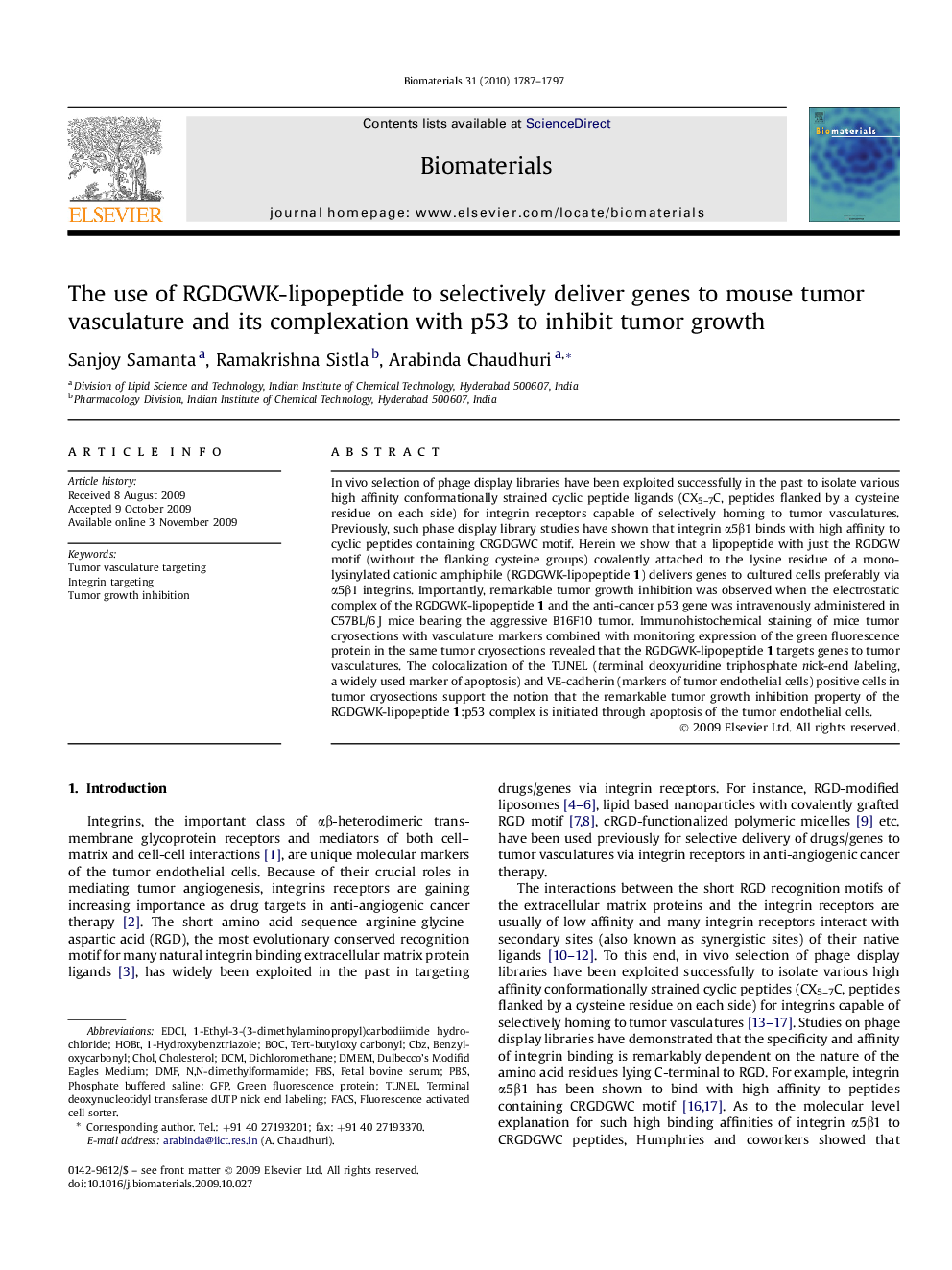| Article ID | Journal | Published Year | Pages | File Type |
|---|---|---|---|---|
| 9366 | Biomaterials | 2010 | 11 Pages |
In vivo selection of phage display libraries have been exploited successfully in the past to isolate various high affinity conformationally strained cyclic peptide ligands (CX5–7C, peptides flanked by a cysteine residue on each side) for integrin receptors capable of selectively homing to tumor vasculatures. Previously, such phase display library studies have shown that integrin α5β1 binds with high affinity to cyclic peptides containing CRGDGWC motif. Herein we show that a lipopeptide with just the RGDGW motif (without the flanking cysteine groups) covalently attached to the lysine residue of a monolysinylated cationic amphiphile (RGDGWK-lipopeptide 1) delivers genes to cultured cells preferably via α5β1 integrins. Importantly, remarkable tumor growth inhibition was observed when the electrostatic complex of the RGDGWK-lipopeptide 1 and the anti-cancer p53 gene was intravenously administered in C57BL/6 J mice bearing the aggressive B16F10 tumor. Immunohistochemical staining of mice tumor cryosections with vasculature markers combined with monitoring expression of the green fluorescence protein in the same tumor cryosections revealed that the RGDGWK-lipopeptide 1 targets genes to tumor vasculatures. The colocalization of the TUNEL (terminal deoxyuridine triphosphate nick-end labeling, a widely used marker of apoptosis) and VE-cadherin (markers of tumor endothelial cells) positive cells in tumor cryosections support the notion that the remarkable tumor growth inhibition property of the RGDGWK-lipopeptide 1:p53 complex is initiated through apoptosis of the tumor endothelial cells.
